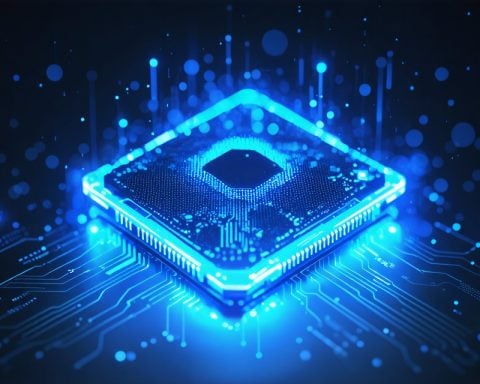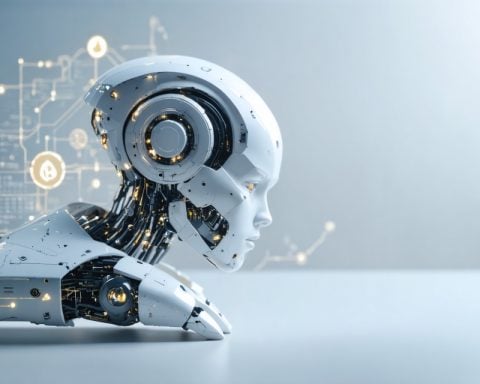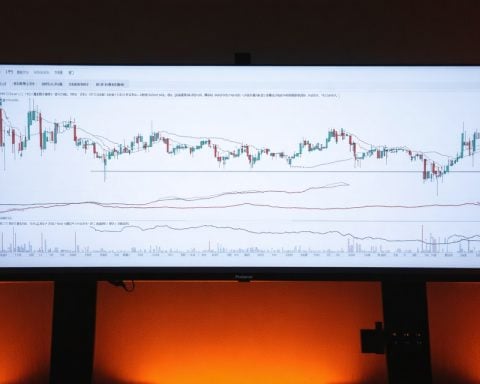Unleashing the Future of Electric Cars with Mixed Energy Batteries
In a groundbreaking development in the electric vehicle (EV) industry, General Motors (GM) is pioneering a concept that could reshape how we think about car batteries. At the heart of this innovation is the idea of mixed-chemistry battery packs, a technology that promises to enhance the efficiency and cost-effectiveness of EVs like never before.
The Technology Behind the Innovation
GM’s approach involves the use of both nickel manganese cobalt (NCM) and lithium iron phosphate (LFP) battery cells. The dual approach aims to capitalize on the strengths of each chemistry type—NCM’s high energy density and LFP’s affordability. These battery types will be housed in separate modules, allowing vehicles to adapt energy use to current driving conditions through a sophisticated control system.
Benefits and Challenges of the Dual Approach
What We Stand to Gain:
– Affordability: Leveraging LFP could significantly reduce the cost of battery production.
– Enhanced Range: The higher energy density of NCM can boost the driving range during critical times.
– Adaptive Performance: Having tailored energy usage can offer customized power delivery for diverse driving needs.
Potential Hurdles:
– Complex Engineering: Managing diverse battery chemistries is technologically challenging.
– Balancing Act: Avoiding imbalances in charge across different cells remains a critical task.
Industry Transformation and Beyond
GM isn’t alone in this venture, as other industry giants like CATL and Our Next Energy are also testing the waters with mixed-chemistry batteries. For example, the substantial increase in the range demonstrated with the BMW iX using these mixed chemistries highlights the tremendous possibilities.
What’s on the Horizon?
The introduction of mixed-chemistry batteries is expected to drive forward a more widespread adoption of EVs by making them more appealing to a broader consumer base. This innovation not only promises to transform the automobile industry but also to propel society toward a new era of sustainable transportation.
As GM continues to be at the forefront of this technological shift, the electric vehicle market is set for a thrilling evolution. Stay informed as mixed-chemistry batteries pave the way for more sustainable and practical automotive solutions.
The Environmental and Societal Impact of Mixed-Energy Batteries in Electric Vehicles
In a world increasingly concerned with sustainability and reducing carbon emissions, the development of mixed-energy batteries represents a promising shift in the automotive industry. By combining different battery chemistries, such as nickel manganese cobalt (NCM) and lithium iron phosphate (LFP), companies like General Motors are paving the way for a future where electric vehicles (EVs) are not only more efficient and cost-effective but also significantly more eco-friendly.
Environmental Impact
1. Reduction in Carbon Footprint: The use of lithium iron phosphate (LFP) batteries, known for their affordability and stability, can dramatically decrease the reliance on more expensive and resource-intensive materials like cobalt. Reducing cobalt and nickel usage in batteries not only lowers the environmental impact associated with their mining but also creates a pathway for less disruptive battery production.
2. Waste Management: Mixed-energy batteries can potentially extend the lifespan of EV batteries by optimizing usage patterns, which means less frequent replacement and reduced battery waste. Furthermore, the flexibility in chemistry could improve battery recycling technologies, as simplified processing might be achieved by separating and repurposing distinct chemistry modules.
Societal and Economic Implications
1. Increased Accessibility: With the potential to lower manufacturing costs thanks to the inclusion of cost-effective LFP cells, EVs may become more affordable for a wider range of consumers. This could democratize access to clean transportation, reducing socio-economic barriers and fostering more equitable societal outcomes.
2. Job Creation and Economic Growth: The development and production of mixed-energy batteries could spark the creation of new jobs within the tech and manufacturing sectors. As more companies invest in this technology, economies could see a boom in innovation-driven growth, providing new opportunities for skill development and specialization.
The Future of Humanity
1. Technological Advancements: The ongoing exploration and implementation of mixed-energy batteries are likely to drive future technological innovations. As EVs become more efficient and practical, they may also spur advancements in energy storage for other applications, such as renewable energy grids, contributing to a larger ecosystem of sustainable technology.
2. Sustainable Urbanization: As electric vehicles become a more prominent fixture in urban settings, cities may experience a decrease in pollution and an increase in air quality. This is a crucial step toward fostering healthier living environments and could impact urban planning, leading to more spaces prioritizing eco-friendly transportation options.
3. Global Carbon Reduction Goals: The accelerated adoption of EVs aligns closely with global efforts to reduce carbon emissions and combat climate change. Mixed-energy battery technology could be a catalyst for achieving international environmental targets by facilitating a faster transition from fossil fuel-dependent transportation.
In summary, the innovation of mixed-energy batteries not only stands to revolutionize the electric vehicle industry but also holds the potential to drive significant environmental, societal, and economic benefits worldwide. As developments continue to unfold, this technology could help outline a future where sustainable living and technological progress go hand in hand, offering a hopeful outlook for humanity’s efforts to mitigate climate change and improve global well-being.
Revolutionizing Electric Cars: Discover the Power of Mixed-Chemistry Batteries
A Look into the Future of Electric Vehicle Batteries
As the demand for electric vehicles (EVs) amplifies, innovative technologies like mixed-chemistry batteries are proving to be game-changers. General Motors (GM) is spearheading this transformative approach with its cutting-edge battery technology that combines nickel manganese cobalt (NCM) and lithium iron phosphate (LFP) cells. This dual-chemistry strategy is poised to redefine the EV landscape, offering improved efficiency and cost-effectiveness.
Unveiling the Features and Advantages
1. Cost Efficiency:
One of the most significant benefits of mixed-chemistry batteries is the potential reduction in production costs, thanks to the affordability associated with LFP batteries. This cost-saving can translate into more competitively priced electric vehicles.
2. Performance Enhancement:
The synergy between NCM’s high energy density and LFP’s stability results in vehicles that can sustain longer ranges and exhibit powerful performance during crucial driving conditions. This adaptability makes EVs more reliable for various driving scenarios.
3. Sustainability and Adaptability:
By optimizing energy usage through a sophisticated control system, mixed-chemistry batteries contribute to a sustainable transportation future, allowing EVs to efficiently manage their energy needs according to driving demands.
Navigating the Challenges
1. Technical Complexities:
Integrating two distinct battery chemistries in a single pack demands advanced engineering solutions. Developers face the challenge of managing the complex interactions between these battery types, requiring robust control systems to ensure optimal performance.
2. Energy Balancing:
A significant hurdle lies in maintaining balanced charge levels across different cell types. Overcoming this barrier is crucial to preventing imbalances that could affect battery life and safety.
Reshaping the Industry
General Motors is not alone in the quest for pioneering battery solutions. Industry leaders like CATL and Our Next Energy are also exploring the potential of mixed-chemistry batteries. The successful implementation of such technology in vehicles like the BMW iX is a testament to its transformative impact on extending EV range and performance.
Anticipating Future Trends
The proliferation of mixed-chemistry batteries is expected to revolutionize the electric vehicle market by attracting a broader consumer base and fostering widespread adoption. As these vehicles become more accessible and practical, they promise to elevate the standard for sustainability in transportation.
As GM and other industry trailblazers continue to advance this innovative technology, the electric vehicle sector is on the brink of an exciting era. Keeping an eye on these developments is crucial for those eager to witness the future of automotive technology and sustainable energy solutions unfold.












